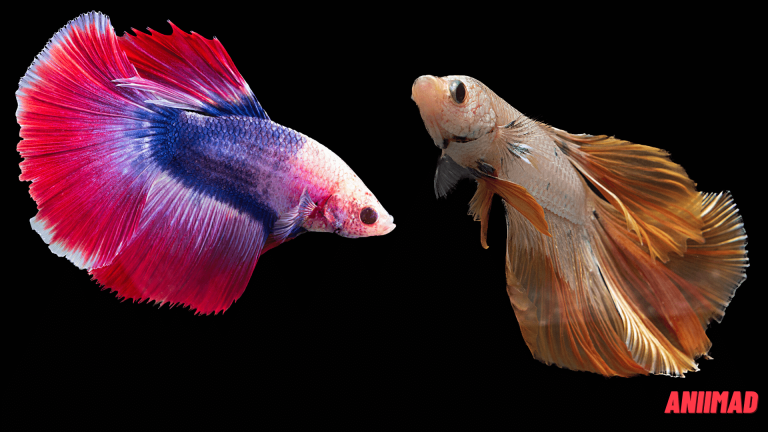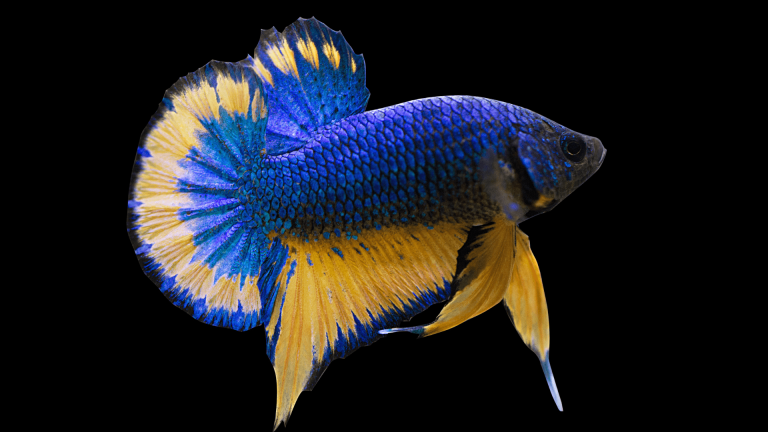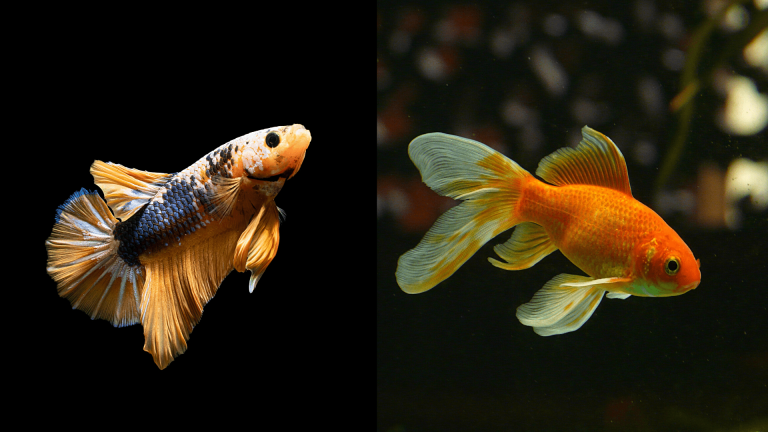Female Betta Fish Care: A Comprehensive Guide
Contents
- 1 The Delightful World of Female Betta Fish Care
- 2 Female Betta Fish Care: A Closer Look
- 2.1 The Ideal Tank Setup for Female Betta Fish Care
- 2.2 Water Conditions: Ensuring Pristine Environment
- 2.3 Feeding Your Female Betta Fish
- 2.4 Breeding Considerations: Nurturing Future Generations
- 2.4.1 Dedicated Breeding Tank: A Safe Haven
- 2.4.2 Choosing the Breeding Pair: Compatibility Matters
- 2.4.3 Inducing Spawning: The Courtship Dance
- 2.4.4 Egg Management: Caring for the Future Fry
- 2.4.5 Fry Care: Feeding and Growing
- 2.4.6 Patience and Observation: A Rewarding Process
- 2.4.7 Responsible Breeding: Avoid Overpopulation
- 2.5 Female Betta Fish Health Maintenance
- 2.5.1 Regular Observation: The Key to Early Detection
- 2.5.2 Quarantine for New Additions: Preventing Disease
- 2.5.3 Balanced Diet: A Foundation of Good Health
- 2.5.4 Clean Water: The Cornerstone of Health
- 2.5.5 Disease Awareness: Identifying and Treating Illness
- 2.5.6 Stress Reduction: Creating a Calm Environment
- 2.5.7 Regular Tank Maintenance: A Preventive Approach
- 2.5.8 Proper Handling: Minimizing Stress
- 3 What is Normal Female Betta Fish Behavior?
- 4 Here are Some Frequently Asked Questions (FAQ) About Female Betta Fish Care
- 5 Conclusion: Nurturing Your Female Betta Fish
Learn how to provide optimal female betta fish care to ensure a healthy and vibrant aquatic companion. From tank setup to feeding and breeding, discover expert insights and practical tips for maintaining a thriving female betta fish habitat.
The Delightful World of Female Betta Fish Care

Are you ready to embark on an exciting journey into the realm of female betta fish care? These captivating aquatic creatures, scientifically known as Betta splendens, are renowned for their striking colors and elegant fin displays. Female bettas exhibit unique behaviors and possess their own set of care requirements that distinguish them from their male counterparts. Whether you’re a seasoned aquarist or a novice enthusiast, this comprehensive guide will equip you with the knowledge and skills to provide optimal care for your female betta fish.
Female Betta Fish Care: A Closer Look

Female betta fish care encompasses various aspects, including tank setup, water conditions, feeding, breeding, and health maintenance. By understanding each facet and providing dedicated attention, you’ll create an environment where your betta thrives and flourishes.
The Ideal Tank Setup for Female Betta Fish Care
Creating the perfect home for your female betta fish is the first step in ensuring their well-being and happiness. The tank setup plays a crucial role in providing a comfortable and stimulating environment for these graceful aquatic companions. Let’s delve into the details of crafting an ideal tank setup for your female betta fish.
Tank Size and Space
In the world of female betta fish care, size matters. Opt for a spacious tank that offers plenty of room for your betta to swim, explore, and exhibit their natural behaviors. A tank size of at least 5 gallons is recommended to prevent overcrowding and promote a healthy living space. The extra space not only reduces stress but also allows you to create a more visually appealing and vibrant underwater landscape.
Filtration System: Keeping It Gentle
When selecting a filtration system for your female betta’s tank, opt for a setup that provides effective water filtration without creating strong currents. Betta fish, especially females, prefer calmer waters that mimic their natural habitat. Choose a filter with adjustable flow settings to ensure a gentle and consistent water movement. A proper filtration system helps maintain water quality by removing harmful toxins and debris, creating a clean and pristine environment.
Maintaining the Right Temperature and Lighting
Temperature and lighting are key components of the ideal tank setup for female betta fish care. These factors contribute to the overall well-being and behavior of your bettas.
- Temperature: Keep the water temperature within the range of 78-80°F (25-27°C). An aquarium heater is a must to maintain a stable and comfortable temperature for your bettas. Consistent warmth supports their metabolic processes and encourages healthy activity levels.
- Lighting: Opt for soft, ambient lighting to replicate the natural conditions of their habitat. Avoid harsh and overly bright lights, as they can cause stress and disrupt the bettas’ natural day-night cycle. A timer can help regulate the lighting schedule, ensuring your bettas receive the right balance of light and darkness.
Substrate and Decor: Creating a Stimulating Environment
Enhance your female betta fish’s habitat by incorporating substrate and decor that mimic their native surroundings.
- Substrate: Choose a soft substrate for the tank bottom. Fine sand or smooth gravel are excellent options that won’t harm your betta’s delicate fins. A soft substrate also allows your bettas to explore and forage naturally.
- Decor and Plants: Add silk or live plants to the tank to provide hiding spots and enrichment. Bettas appreciate places to retreat and rest, and live plants contribute to improved water quality by absorbing excess nutrients. Include ornaments and caves for additional hiding spots, allowing your bettas to feel secure and exhibit their natural behaviors.
Water Conditions: Ensuring Pristine Environment
Maintaining impeccable water conditions is a fundamental aspect of successful female betta fish care. A clean and well-balanced aquatic environment is essential for the health, vitality, and overall well-being of your beloved bettas. In this section, we’ll explore the crucial factors that contribute to water quality and parameters, ensuring a pristine and harmonious habitat for your female betta fish.
pH Levels: Striking the Right Balance
The pH level of the water significantly influences the overall health of your female betta fish. Aim to maintain a pH range between 6.5 and 7.5 in your aquarium. This slightly acidic to neutral pH closely resembles the bettas’ natural habitat and promotes optimal physiological function. Regularly test the pH levels using a reliable aquarium testing kit and make necessary adjustments to ensure stability.
Ammonia and Nitrite Levels: Keeping Toxicity at Bay
Ammonia and nitrite are toxic substances that can accumulate in the aquarium and prove harmful to your bettas. Monitoring and controlling these compounds is crucial:
- Ammonia: Ammonia is produced by fish waste and decaying organic matter. Elevated levels of ammonia can lead to stress and health issues. Use biological filtration, perform regular water changes, and avoid overfeeding to keep ammonia levels at zero.
- Nitrite: Nitrite is a byproduct of the breakdown of ammonia. While less toxic than ammonia, high nitrite levels can still pose a threat to your fish. Maintain a nitrite level of zero through proper filtration and regular water changes.

Water Changes: Refreshing the Environment
Regular water changes are a cornerstone of maintaining optimal water quality in your betta fish tank. Perform partial water changes of 25-30% weekly to remove accumulated waste, excess nutrients, and contaminants. This practice helps restore the pristine conditions your bettas require for a thriving existence.
Water Conditioning: Eliminating Harmful Elements
Before introducing new water to your betta’s habitat, ensure it is free from harmful elements such as chlorine and chloramine. Use a high-quality water conditioner to neutralize these chemicals and create a safe environment for your female betta fish.
Feeding Your Female Betta Fish
Proper nutrition is a cornerstone of female betta fish care, ensuring their vitality, vibrant colors, and overall well-being. By offering a balanced and nutritious diet, you’re providing the foundation for a healthy and thriving aquatic companion. Let’s delve into the essential aspects of feeding your female betta fish
High-Quality Pellets: A Balanced Diet
Start by selecting high-quality betta pellets as the mainstay of your female betta’s diet. These pellets are specially formulated to meet the nutritional needs of bettas and are readily available at pet stores. Look for pellets that contain essential nutrients, including protein and vitamins, to support optimal health and growth.
Variety and Treats: Introducing Diversity
While pellets form the core of their diet, introducing variety through occasional treats is beneficial. Betta fish, like any discerning eaters, appreciate a diverse menu. Consider supplementing their diet with freeze-dried or live treats such as bloodworms, brine shrimp, and daphnia. These treats provide additional nutrients and help mimic their natural feeding habits.
Feeding Schedule: Moderation is Key
Establishing a consistent feeding schedule is vital to prevent overfeeding and maintain the health of your female betta fish. Offer small portions of food twice a day, and observe their eating habits. Bettas have small stomachs, and overfeeding can lead to digestive issues and water quality problems. If you notice uneaten food in the tank, adjust the portion size accordingly.
Observing Feeding Behavior: Individual Preferences
Each female betta fish has her own eating preferences and behaviors. Some may be enthusiastic eaters, while others might be more selective. Observe their behavior during feeding times to gauge their appetite. If a betta seems uninterested in food, it’s not necessarily a cause for concern; appetite fluctuations are normal.
Maintaining Water Quality: Impact of Feeding
Feeding practices can influence water quality in the tank. Uneaten food can contribute to excess waste and impact water parameters. To prevent this, remove any uneaten food after each feeding session. This simple step contributes to a clean and healthy aquatic environment.
Avoid Overfeeding: The Pitfall to Avoid
Overfeeding is a common mistake that can have negative consequences for your female betta fish. Excess food can lead to obesity, bloating, and compromised water quality. A well-balanced diet and adherence to a feeding schedule will help prevent overfeeding and support the long-term health of your bettas.
Breeding Considerations: Nurturing Future Generations
Breeding female betta fish is an exciting endeavor that allows you to witness the remarkable process of new life unfolding within your aquarium. However, successful breeding requires careful planning, preparation, and a deep understanding of the behaviors and needs of your bettas. In this section, we’ll explore the essential aspects of breeding considerations for female betta fish.
Dedicated Breeding Tank: A Safe Haven
Creating a separate breeding tank is essential to provide a controlled environment for the breeding process. This tank should be smaller than the main tank, allowing for easier monitoring and management. Choose a tank size of around 10-20 gallons, ensuring sufficient space for the breeding pair and potential fry.
Choosing the Breeding Pair: Compatibility Matters
Selecting a compatible breeding pair is crucial for successful reproduction. Observe potential pairs for signs of aggression or compatibility before introducing them to the breeding tank. Female bettas are generally less aggressive than males, but monitoring their interactions is key.
Inducing Spawning: The Courtship Dance
Male and female bettas engage in an elaborate courtship dance before spawning. The male builds a bubble nest at the water’s surface, and once the female is ready, they perform a series of synchronized movements. The female releases eggs, which the male fertilizes and collects in the bubble nest. Observing this dance is a fascinating experience that signals the beginning of the breeding process.
Egg Management: Caring for the Future Fry
After spawning, it’s essential to remove the female from the breeding tank to prevent aggression from the male. The male will diligently guard the bubble nest and tend to the eggs. In about 24-48 hours, the eggs will hatch into fry. At this stage, the male should also be removed to avoid any potential threat to the fry.
Fry Care: Feeding and Growing
Once the fry hatch, they will initially survive on the nutrition from their egg sacs. After a few days, you can start feeding them infusoria or commercial fry food in tiny amounts. As the fry grow, gradually introduce larger food options, such as finely crushed pellets and microworms.
Patience and Observation: A Rewarding Process
Breeding bettas requires patience, dedication, and keen observation. Not all breeding attempts will be successful, and the process may take time. Monitor water conditions, provide proper nutrition, and ensure a stress-free environment for both the breeding pair and the fry.
Responsible Breeding: Avoid Overpopulation
While breeding bettas can be a gratifying experience, it’s important to breed responsibly and have a plan for the fry. Overpopulation can lead to overcrowding and compromised water quality. Be prepared to provide proper care or find suitable homes for the fry.
Female Betta Fish Health Maintenance
Ensuring the well-being and health of your female betta fish is paramount to providing a fulfilling and joyful aquatic experience. Female bettas, like any living creatures, require attentive care and proactive measures to prevent and address potential health issues. In this section, we’ll delve into the essential aspects of female betta fish health maintenance:

Regular Observation: The Key to Early Detection
Dedicate time each day to observe the behavior and appearance of your female betta fish. Pay attention to any changes in behavior, appetite, swimming patterns, or physical appearance. Early detection is crucial for addressing health concerns promptly.
Quarantine for New Additions: Preventing Disease
Before introducing any new fish to your aquarium, it’s advisable to quarantine them in a separate tank for a few weeks. This practice helps prevent the spread of potential diseases to your existing fish population. Observe the new arrivals for signs of illness before integrating them into the main tank.
Balanced Diet: A Foundation of Good Health
A nutritious and well-balanced diet is essential for maintaining the health of your female betta fish. A varied diet of high-quality pellets, live foods, and occasional treats ensures they receive the necessary nutrients to support their immune system and overall vitality.
Clean Water: The Cornerstone of Health
Consistently clean water is paramount to preventing stress and disease. Maintain optimal water conditions by performing regular partial water changes, keeping ammonia and nitrite levels at zero, and ensuring proper filtration.
Disease Awareness: Identifying and Treating Illness
Educate yourself about common betta fish diseases and their symptoms. Some common illnesses include fin rot, ich, and dropsy. If you notice any signs of illness, such as lethargy, clamped fins, or unusual spots, take swift action. Quarantine the affected fish and consult a veterinarian with experience in fish health if necessary.
Stress Reduction: Creating a Calm Environment
Bettas are sensitive to stress, which can weaken their immune system and make them more susceptible to disease. Minimize stressors by providing plenty of hiding spots, maintaining stable water parameters, and avoiding sudden changes in the environment.
Regular Tank Maintenance: A Preventive Approach
Routine tank maintenance is a proactive way to prevent health issues. Clean the tank, remove debris, and trim any decaying plant matter. Ensure that the filtration system is functioning optimally and that the water temperature remains stable.
Proper Handling: Minimizing Stress
When handling your female betta fish, use a gentle touch and avoid sudden movements. Stress caused by rough handling can lead to health problems and reduce their overall well-being.
What is Normal Female Betta Fish Behavior?

Normal female betta fish behavior can vary depending on their personality, environment, and social dynamics, but there are some general behaviors that you can expect to see in a healthy and content female betta. Here are some common behaviors.
Active Swimming
Female bettas are generally active swimmers, exploring their tanks and investigating their surroundings. They should see swimming regularly throughout the day.
Feeding
Healthy female bettas have a good appetite and will eagerly swim to the surface when it’s time to eat. They should actively consume their food during feeding times.
Interaction with Tank Mates
In a community tank, female bettas often interact with other tank mates. While they may occasionally display some territorial behaviors, they are generally less aggressive than male bettas. Females can coexist peacefully with compatible tank mates.
Exploring Hiding Spots
Female bettas appreciate having hiding spots, such as live or artificial plants, caves, and driftwood. They will use these spots to rest, hide, or seek refuge if they feel stressed.
Flaring
Like male bettas, females can also flare their fins when they feel threatened or want to display dominance. Flaring is a natural behavior and is not always a sign of aggression.
Building Bubble Nests
Although not as common as in males, some female bettas may also build bubble nests if they are in a suitable environment and feel comfortable.
Curiosity
Female bettas are naturally curious fish and may investigate new additions to the tank or changes in their environment.
Interaction with Humans
With time and patience, some female bettas can become comfortable with their owners and may even interact by swimming to the front of the tank when approached.
Here are Some Frequently Asked Questions (FAQ) About Female Betta Fish Care

How Do I Determine the Gender of My Betta Fish?
Distinguishing between male and female bettas can be tricky. Look for smaller size, shorter fins, and an absence of vibrant colors in females.
Can Female Bettas Live Together?
Yes, female bettas can coexist, but avoid overcrowding. Maintain a sorority with a minimum of 4-5 females in a well-sized tank.
Why Is My Female Betta Not Eating?
Stress, water temperature fluctuations, or illness could be the cause. Ensure proper conditions and offer a variety of foods.
What’s the Ideal Breeding Setup?
Prepare a separate breeding tank with gentle filtration, live plants, and hiding spots. Monitor the mating process closely.
How Often Should I Clean the Tank?
Perform partial water changes of 25-30% weekly, and vacuum the substrate during water changes.
Are Live Plants Necessary in the Tank?
While not mandatory, live plants provide hiding spots, aid water quality, and mimic their natural habitat.
Conclusion: Nurturing Your Female Betta Fish
As you delve into the realm of female betta fish care, you embark on a rewarding journey of companionship and responsibility. By creating an optimal environment, providing proper nutrition, and embracing effective health maintenance practices, you’ll cultivate a vibrant and flourishing aquatic habitat. Remember, each betta has its unique personality, so observe, adapt, and cherish the moments as you watch your female betta thrive.







